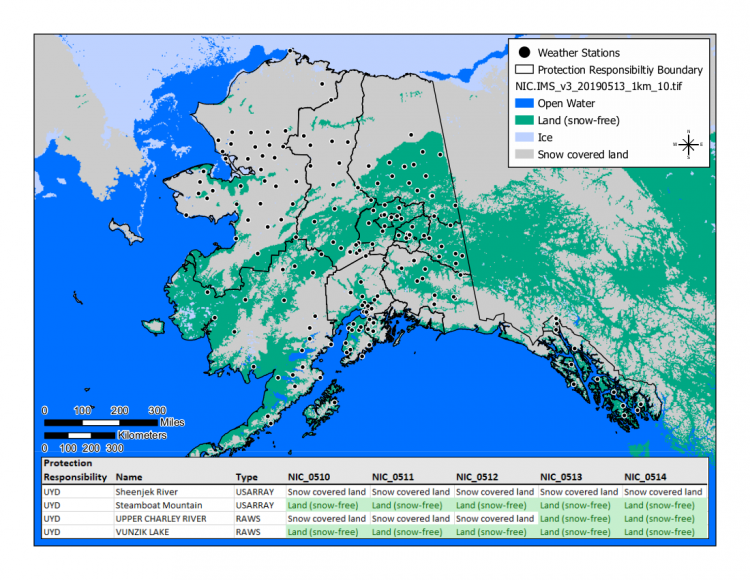Alaska’s boreal forest burns every summer somewhere. To predict which areas are most susceptible to wildfire, managers assess fuel dryness and burnability using weather data collected at Remote Automated Weather Stations (RAWS). Managers must start gathering these data within just a few days after the snow has melted away from a weather station in the spring. But snow melts unevenly. Aspect, elevation, and weather all influence the pattern and speed at which snow melts. Land managers thus face a challenge: how to monitor the melting of the snow in detail across a huge region that is topographically complex and only sparsely populated. Such monitoring has previously been accomplished subjectively from aircraft.
This study pairs subjective airborne assessments with objective assessments of snowmelt captured remotely by various satellites. Using data from the Interactive Multisensor Snow and Ice Mapping System (IMS), the Alaska wildland fire community can track the changes in snow cover near individual weather stations and across broader spatial scales. Data from IMS were combined with point data representing the location of remote weather stations to produce a continuous, rolling summary of snow and ice conditions. In turn, this information was used to inform decisions on when to start calculating fire weather indices.
Use of these data was first applied in Alaska midway through the melting process in the spring of 2019. Alaska Fire Service will use this method again in 2020 from the beginning of the melting season.

Sample IMS grid at 1-kilometer spatial resolution. Green pixels represent snow-free ground, while gray pixels indicate remaining snowpack. The tabular data at the bottom of the image indicate the presence or absence of snow at specific points where weather stations are located. For example, the Upper Charley River RAWS was surrounded by snow-covered ground until May 13.

